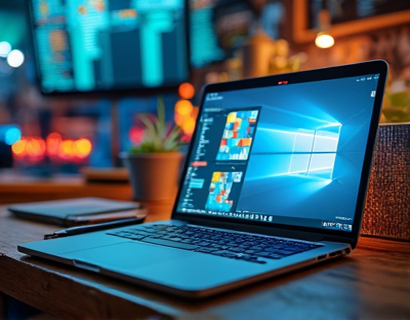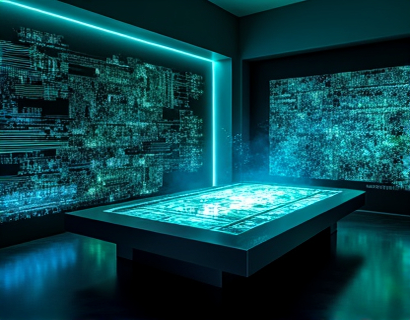AI-Driven Exploration: Uncovering Egypt's Ancient Secrets and Authentic Artifact Shopping Experience
The exploration of ancient Egypt has long captivated the imagination of cultural enthusiasts and history buffs worldwide. With the advent of advanced technologies, particularly AI-driven tools, the journey into Egypt's profound past has become more accessible and insightful than ever. This comprehensive guide delves into how AI is revolutionizing our understanding of Egypt's rich history and culture, offering unprecedented insights to those eager to learn. Additionally, it highlights a unique opportunity to own authentic Egyptian artifacts, connecting modern audiences with the timeless legacy of this ancient civilization.
AI in Archaeological Research
AI technologies, including machine learning and deep learning, have transformed archaeological research in Egypt. These tools analyze vast datasets from excavations, satellite imagery, and historical records to identify patterns and uncover hidden sites. For instance, AI algorithms can process aerial photographs to detect subtle changes in land surface that indicate buried structures, a method that has led to the discovery of several unknown tombs and temples.
One significant application of AI is in the field of epigraphy, the study of ancient inscriptions. Machine learning models trained on thousands of hieroglyphic examples can now assist in deciphering texts that have remained undeciphered for centuries. This not only accelerates the translation process but also reduces the margin of error, providing more accurate interpretations of historical texts.
Virtual Tours and 3D Modeling
AI-driven virtual tours offer an immersive experience, allowing individuals to explore Egypt's iconic sites from the comfort of their homes. Using 3D modeling and augmented reality, these tours recreate ancient environments with remarkable precision. Users can walk through the Great Pyramid of Giza, navigate the temples of Luxor, or stand at the edge of the Nile, all virtually. This technology not only educates but also preserves these sites by reducing the physical impact of tourism.
Moreover, AI enhances the accuracy and detail of these models. By analyzing high-resolution scans and photographs, AI can fill in missing details and restore structures to their original glory, providing a vivid glimpse into Egypt's ancient past. These virtual experiences are invaluable for researchers, students, and anyone interested in exploring Egypt's historical landmarks.
AI in Artifact Authentication
The authenticity of Egyptian artifacts is crucial for collectors, museums, and researchers. AI plays a pivotal role in verifying the genuineness of these items. Advanced imaging techniques, combined with machine learning algorithms, can analyze the material composition, craftsmanship, and historical context of artifacts. This multi-faceted approach helps in identifying forgeries and confirming the authenticity of artifacts, ensuring that only genuine pieces reach the market.
For example, AI can examine the patina, wear patterns, and microscopic details that are unique to artifacts from specific periods. By cross-referencing these features with known examples, AI can provide a high degree of confidence in an artifact's authenticity. This process not only protects the market from fraud but also helps preserve the cultural heritage by ensuring that artifacts are handled and displayed responsibly.
Enhanced Learning Resources
For those seeking a deeper understanding of Egypt's history and culture, AI-driven educational resources offer a wealth of information. Interactive platforms use AI to create personalized learning paths based on individual interests and knowledge levels. These platforms can recommend articles, videos, and courses that cover everything from the daily life of ancient Egyptians to the political and religious structures of their society.
AI chatbots and virtual assistants further enhance the learning experience by providing instant answers to questions and engaging in conversational learning. These tools can simulate discussions with ancient historians or archaeologists, making the learning process more dynamic and engaging. Such resources are particularly beneficial for students and educators, offering a comprehensive and up-to-date source of information.
Authentic Artifact Shopping Experience
For those who wish to bring a piece of Egypt's history into their homes, a curated selection of authentic artifacts is available. These items are sourced from reputable collectors and institutions, ensuring their authenticity and historical significance. Each artifact comes with detailed documentation, including its origin, age, and historical context, providing buyers with a deeper connection to the object they are purchasing.
The shopping experience is enhanced by AI-driven recommendations. By analyzing a user's preferences and previous interactions, the system suggests artifacts that align with their interests. This personalized approach not only simplifies the shopping process but also introduces users to items they might not have considered otherwise. High-quality images and detailed descriptions ensure that buyers make informed decisions.
Selecting the Right Artifact
When choosing an artifact, it is essential to consider several factors. First, the historical period and significance of the item play a crucial role. Artifacts from major dynasties, such as the Old Kingdom or the New Kingdom, often hold greater historical value. Additionally, the craftsmanship and condition of the artifact are important. Items that demonstrate exceptional skill and are well-preserved are generally more desirable.
Provenance is another critical aspect. Artifacts with a clear and documented history are more valuable and trusted. Reputable sellers and institutions provide detailed provenance, which can include excavation records, previous ownership, and scholarly assessments. Buyers should always verify this information to ensure they are purchasing a genuine piece of history.
Supporting Cultural Preservation
Purchasing authentic Egyptian artifacts supports the preservation of cultural heritage. Proceeds from these sales often go towards conserving archaeological sites, funding research, and supporting local communities. By owning a piece of Egypt's past, buyers contribute to the ongoing efforts to protect and study this invaluable heritage. This connection between personal ownership and cultural preservation adds a layer of meaning to the artifact, making it more than just a decorative item.
Moreover, the market for authentic artifacts encourages responsible collecting practices. Dealers and collectors who prioritize authenticity and provenance help maintain high standards within the industry, deterring the trade of forgeries and illicitly obtained items. This ethical approach ensures that the artifacts remain a bridge to the past, accessible to future generations.
Conclusion
The integration of AI in the exploration of ancient Egypt has opened new avenues for research, education, and appreciation of this ancient civilization. From AI-driven archaeological discoveries to virtual tours and authentic artifact authentication, technology is enhancing our understanding and connection to Egypt's rich history. For those interested in owning a piece of this legacy, a curated selection of authentic artifacts offers a unique way to bring the past into the present. Whether through learning or ownership, the wonders of Egypt continue to inspire and educate, ensuring that its legacy endures.











































